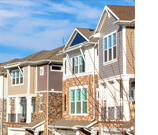Insights
 Understanding Community Association Insurance
Understanding Community Association Insurance
August 15, 2023
Community associations—often referred to as condominium or homeowners’ associations (HOAs)—are a valuable component of the home ownership experience. These associations are tasked with implementation and enforcement of property rules designed to preserve the appearance of neighborhoods and to protect property values for members.
As rulemaking entities, community associations are faced with significant risks. To help manage those risks, community association insurance solutions serve as a foundational element of protection for the interests of the association and their communities. In this article, we explore common community association insurance coverages, giving HOAs and similar organizations the information they need to make smart insurance purchasing decisions.
To learn more about community associations insurance, visit our Tailored Community Association Plan (TCAP) page.
Primary and Specialized Coverages in Community Association Insurance Plans
The property and assets of community associations like HOAs are always at risk from incidents like criminal activity, personal injury claims, and property damage or loss due to weather or environmental factors. Management liability is also a major concern for these organizations.
Insurance protection is designed to cover against losses associated with natural and man-made acts. Common insurance coverages include:
- Property
- General liability
- Hired and non-owned auto
- Directors and officers (D&O)
- Equipment breakdown/loss
- Crime
- Garagekeepers liability
- Employee benefits liability
- Cyber/network security
These primary coverages are often supplemented by optional specialized programs, including:
- Workers’ compensation (where required by local/state/federal law)
- Auto liability
- Umbrella/excess liability
- Property managers errors and omissions (E&O) liability
An insurer specializing in community association insurance plans can help organizations find the coverages they need to meet existing and emerging risks.
Information on Factors Influencing Coverage Limits
Coverage limits for community association and Homeowners’ Association (HOA) insurance plans are determined through a variety of factors. These plans are designed to provide protection against liability and property damage within common areas managed by the association. The limits must be carefully considered to ensure that they meet the unique needs and requirements of the community.
Here’s how the coverage limits are generally determined:
- Property Value Assessment: This includes a careful evaluation of the value of common areas like pools, clubhouses, fitness centers, and other amenities. This valuation helps to set the coverage limits for property insurance to ensure that the replacement costs are covered in the event of damage or loss.
- Risk Assessment: An evaluation of the specific risks and potential liabilities of the community is conducted. This can include an assessment of safety concerns, natural disaster risks, crime rates in the area, etc. The more risks identified, the higher the coverage limits may need to be.
- Legal Requirements: Some states or local jurisdictions may have specific insurance requirements that dictate certain minimum coverage limits. This can include specific regulations around liability coverages, workers’ compensation, and other essential coverage types.
- Association Governing Documents: The association’'s governing documents might have specific requirements or stipulations about the coverage limits, including how they should be calculated. They might also outline particular coverages that must be included in the insurance plan.
- Past Claims History: If the association has had prior claims, this may influence the coverage limits. A history of large claims may result in a decision to increase limits, while a lack of claims may mean that existing limits are sufficient.
Your insurance provider can help you understand available coverage limits while developing solutions that meet the specific needs of the community association. As with any insurance plan, it’s essential that these limits be reviewed regularly and adjusted as needed to reflect changes in property values, risk profiles, and other factors to ensure continued adequacy of coverage. ◼
